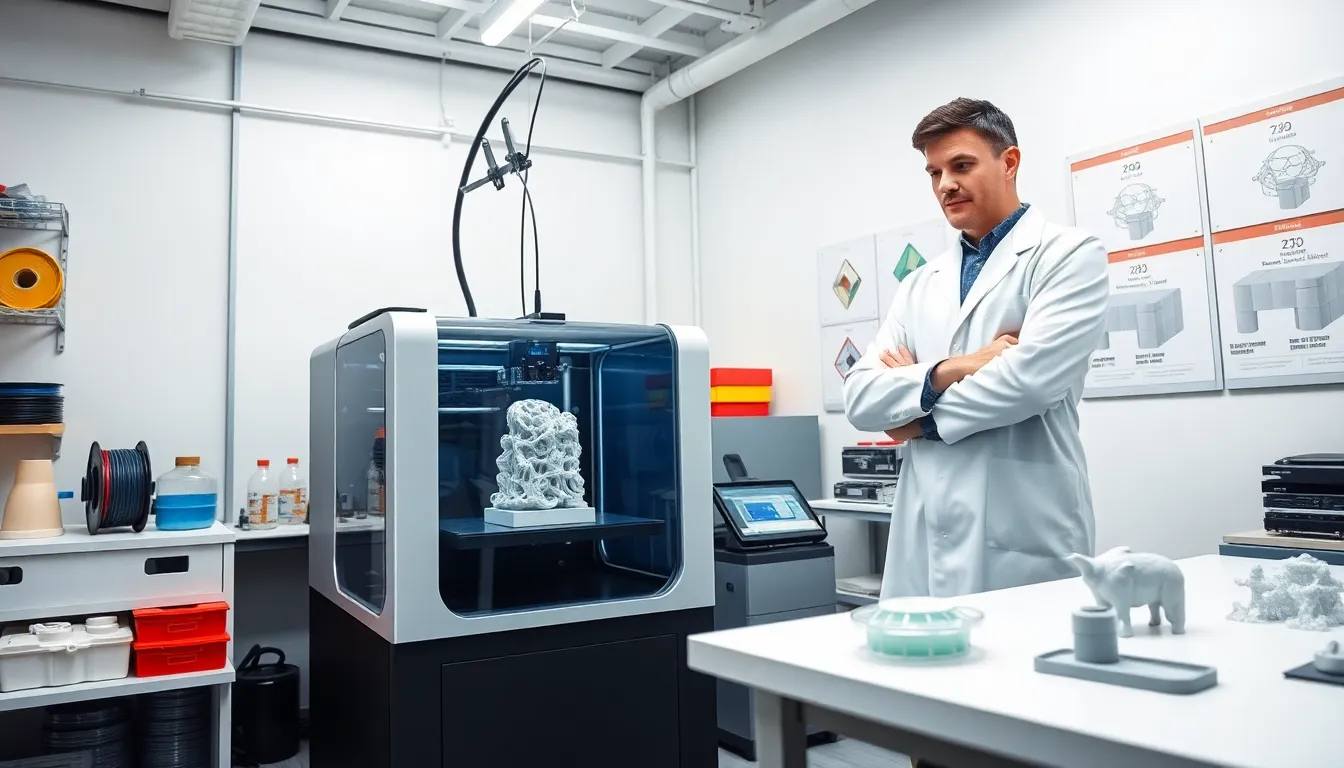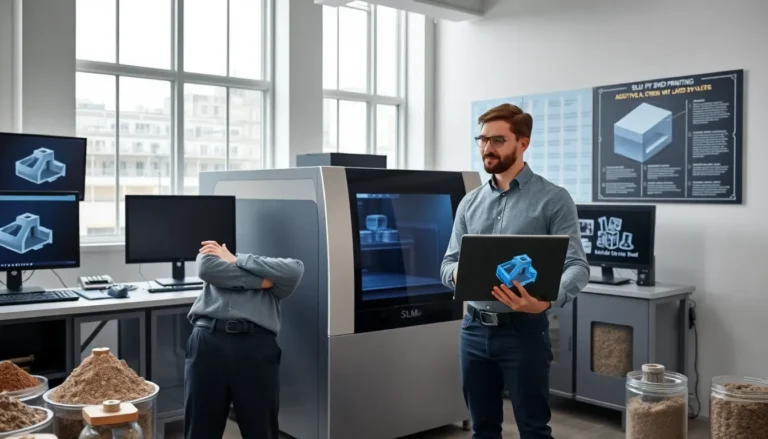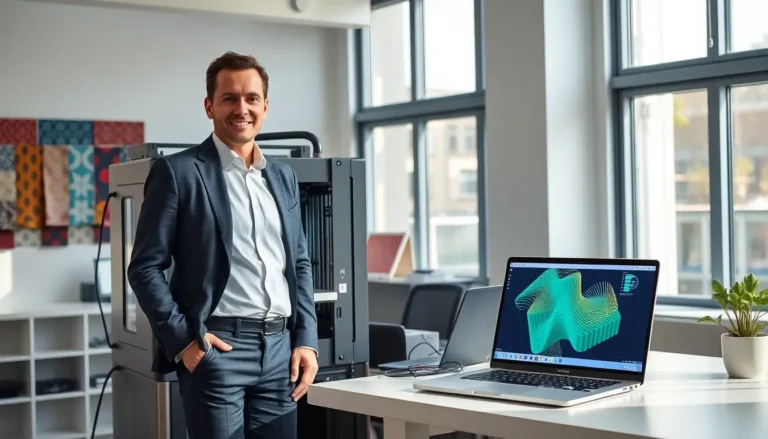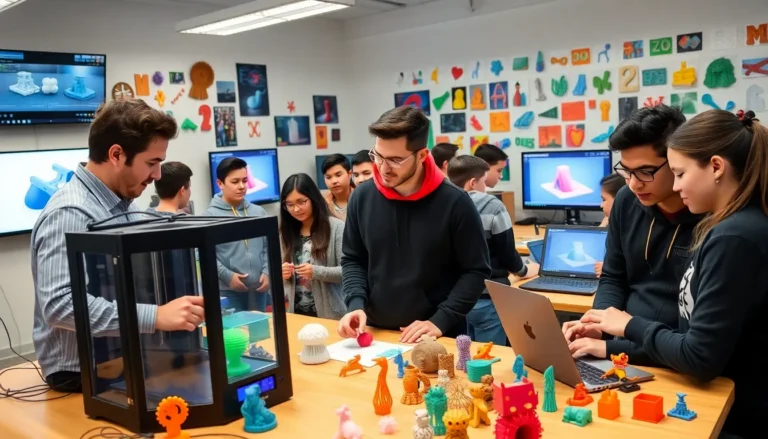Table of Contents
ToggleEver wondered if 3D printing is faster than a coffee break? Well, it’s a bit more intricate than that. While you might picture a printer whirring along like a caffeinated squirrel, the truth is that the duration varies based on several factors. From the type of printer to the complexity of the model, there’s a lot at play. Let’s jump into the nitty-gritty of how long you can expect your 3D printing projects to take and perhaps avoid any ‘I thought it would be done by now’ moments.
Factors Influencing 3D Printing Time

In the realm of 3D printing, time is as variable as your choice of a weekend getaway. Several factors come into play when determining just how long that printer will hum away. Let’s dissect these factors one by one.
Type of 3D Printer
First things first, the type of 3D printer you choose can drastically influence printing times. FDM printers, known for their user-friendliness, might lag slightly behind the speedy SLA printers, which use lasers to cure resin into solid objects. Meanwhile, SLS printers, designed for industrial applications, can take their sweet time involving complex powder sintering processes.
Material Used
Next up is the material. If you’ve selected a high-density material like nylon, prepare for a longer wait. But, lighter materials like PLA can help you shave off some time. Eventually, your material choice is akin to picking between fast food or a gourmet meal, even with great ingredients, the culinary process can be time-consuming.
Model Complexity and Size
Let’s not forget model complexity and size. A simple, small model can practically print in the blink of an eye, whereas a large, intricate design can feel as though it’s taking forever. Think of it this way: assembling a toy is different from constructing a mini Eiffel Tower: time spent varies accordingly.
Print Settings and Resolution
Once the initial factors are sorted, print settings come into play. The resolution you choose can make or break your printing timeline. A higher resolution means finer detail, which naturally extends print time. It’s the classic scenario: more detail often equals more time.
Choosing lower layer heights results in better quality but slower production. On the other hand, opting for a faster print with thicker layers is a trade-off for detail. Like upgrading your smartphone, do you want a feature-packed powerhouse or something simpler? Your choice in print settings will impact both the final outcome and how long you wait.
Common 3D Printing Methods and Their Times
Understanding the common methods of 3D printing can also shed light on the timing aspect. Each method has its quirks that affect duration.
FDM (Fused Deposition Modeling)
FDM is arguably the most popular method, and for good reason. It typically takes anywhere from a few hours to an entire day, depending on the complexity and size of the part. It’s well-suited for beginners, but patience may be required if the prints are larger.
SLA (Stereolithography)
SLA printers are known for delivering exceptional detail with shorter print times, typically within a few hours for smaller items. If a high-quality finish is essential, SLA might be worth the wait, though larger pieces can still take several hours.
SLS (Selective Laser Sintering)
For industrial uses, SLS can be time-consuming, ranging from several hours for small parts to days for larger, complex assemblies. It combines the best of both speed and strength, but don’t expect instant results.
Estimated Printing Times for Different Projects
When it comes to 3D printing, size does matter, in terms of time, that is. Different categories of prints will also come endowed with varied durations.
Small Prints
Small models like keychains or jewelry can be printed relatively quickly, often completing in under an hour.
Medium Prints
A medium-sized model, say, a smartphone case, could take anywhere from 2 to 5 hours, balancing size with quality and detail.
Large Prints
Large prints, such as statues or functional prototypes, take longer, ranging from several hours to over a day. Depending on complexities, prepare for a bit of a marathon with these.
Optimizing 3D Printing Speed
To enhance your printing efficiency, consider optimizing the setup properly. A few adjustments can drastically improve turnaround times.
Choosing the Right Printer
Selecting the right printer is key. If speed is a priority, consider investing in a model designed for quicker results. Many modern printers come with speed-enhancing options that can save hours.
Adjusting Print Settings
Fine-tuning your print settings can also speed things up. Experimenting with layer height and print speed can lead to optimal outcomes without sacrificing quality. Don’t be afraid to test different configurations to see which works best for your projects.
Post-Processing Considerations
Post-processing is another essential aspect of 3D printing time. Once your model is out of the printer, it may require additional work like sanding, painting, or curing. Depending on the intricacy of your design and material, this can add hours to your project completion time. A good rule of thumb is to account for these additional steps when planning your timeline.







